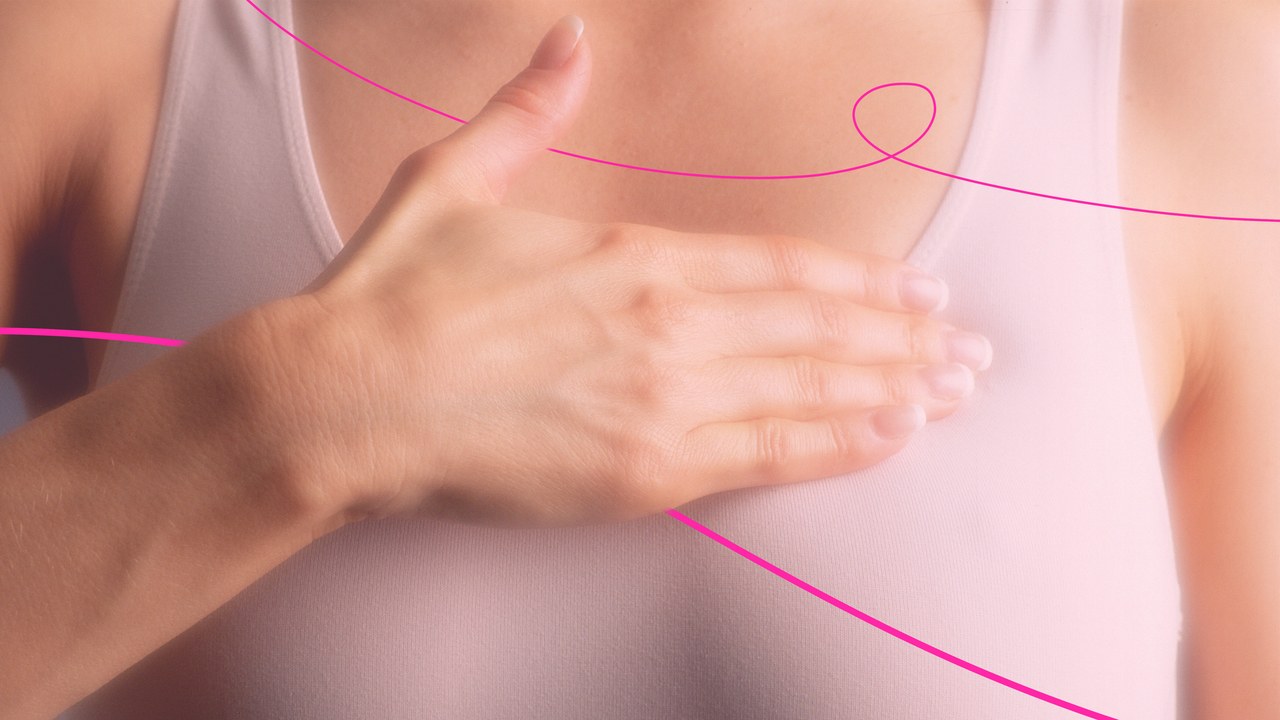10 Breast Cancer Symptoms (Besides Lumps) That Everyone Should Know About

Lumps get all the attention. As they should: A new lump or mass is the most common symptom of breast cancer. But there are other explanations for lumpy breasts—and other breast cancer symptoms you should know about.
Many women have lumpy or uneven breasts. And even if yours are as uniform as Hostess cupcakes, they can change over time for a bunch of reasons. Your breasts may feel more swollen or tender before or during your period. If you’re pregnant, the glands that produce milk may multiply and become larger. Before menopause, hormonal changes may make your breasts lumpier. Weight loss, weight gain, and certain medications can also affect your breasts.
The bottom line: Breast changes are very common, and they’re not usually cancer. In fact, the two most common causes of breast lumps are fibrosis, or the formation of fibrous tissue, and small fluid-filled cysts.
With that said, if you notice a new lump in your breast or armpit—breast tissue can extend into your underarm area—you should see your doctor right away. A lump that’s painless and uneven is more likely to be breast cancer, but breast cancers can also be tender and symmetrical. They can be soft or rubbery. Unless your breasts are small and the lump is very large, you probably won’t be able to see it.
Other reasons besides a lump to make a doctor’s appointment ASAP? If you notice any of the following symptoms:
-
thickening or swelling of part of the breast, even without a
noticeable lump -
dimpled or irritated breast skin that can look like an orange peel
-
red, flaky, scaly, dry, or thick skin around your breast or nipple
-
a change in the direction of your nipple (it may turn inward, pull to
one side, or point in a different direction) -
pain around the nipple
-
an ulcer on the breast or nipple
-
nipple discharge (other than breast milk), including blood
-
swollen lymph nodes (sometimes breast cancer spreads to the lymph
nodes under your arms or around your collarbone and can cause a lump
there before you can feel one in your breast) -
pain in any part of the breast
-
any change in the size or shape of your breast
While mammograms are important, they don’t find every breast cancer. Most breast cancers are found by women while they’re soaping up in the shower, putting on deodorant, and doing other daily activities that bring them into close contact with their breasts. So get familiar with yours—there are some good guidelines here—and know your risk factors. And if you anything seems amiss, get yourself to a healthcare provider stat.
Additional resources: CDC, National Cancer Institute, American Cancer Society, MD Anderson Cancer Center, Moffit Cancer Center




